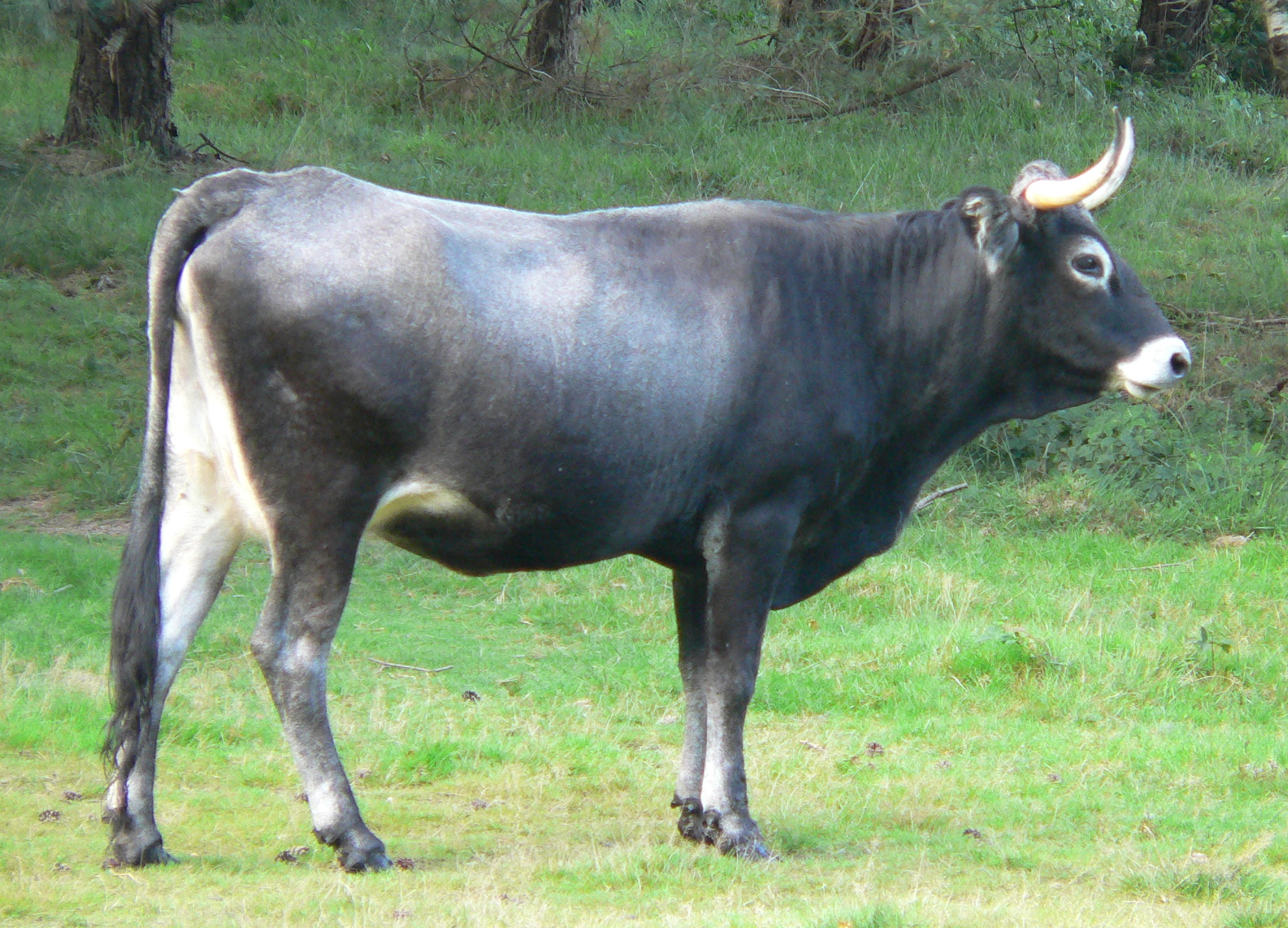Tudanca cattle on:
[Wikipedia]
[Google]
[Amazon]



 The Tudanca is a traditional Spanish breed of cattle from Cantabria, in northern Spain. It takes its name from the village of Tudanca in the in western Cantabria.http://www.iberianature.com/material/cows.html Spanish cows and beefs In the past it was a draught breed, much used for transport of goods to and from the ports of the Cantabrian coast; it is now reared for
The Tudanca is a traditional Spanish breed of cattle from Cantabria, in northern Spain. It takes its name from the village of Tudanca in the in western Cantabria.http://www.iberianature.com/material/cows.html Spanish cows and beefs In the past it was a draught breed, much used for transport of goods to and from the ports of the Cantabrian coast; it is now reared for
File:TudancaBullHeathland.JPG, Tudanca bull in Johannahoeve, Netherlands.
File:Pareja tudanca.jpg, Couple of cows working at the grass crop in
meat
Meat is animal flesh that is eaten as food. Humans have hunted, farmed, and scavenged animals for meat since prehistoric times. The establishment of settlements in the Neolithic Revolution allowed the domestication of animals such as chic ...
, but is still used in traditional sport of ''arrastre de piedra
The (Basque for "oxen tests") are the most popular form of Basque dragging games. It involves oxen, usually a pair, dragging a rock from one side of a square to another. In Spanish this sport is called (stone dragging) or (oxherd test) and ( ...
'', or "stone-dragging". Despite its geographic proximity, it is not closely related to the other cattle breed of Cantabria, the Pasiega
The Pasiega is a traditional Spanish breed of red dairy cattle from the autonomous community of Cantabria in northern Spain. It originated in the Valles Pasiegos in south-eastern Cantabria. The name derives from that of the Pas River, whic ...
.
Appearance and description
Tudanca is a middle-sized cattle breed, with cows reaching 135 cm shoulder height and a weight of 320 kg, bulls reaching 150 cm and 420 kg. The colour of Tudanca goes from greyish to black, cows are lighter than bulls on average. Like the aurochs, Tudanca bulls have a light stripe on their back. Additionally, they often have a light saddle. Typically for Tudanca is the swung back line, which is strongly pronounced in bulls. The cows are smaller and more gracile than the bulls. The long horns of Tudanca are variable, they can be either aurochs-like or swung outwards. Tudanca bulls often carry long curly hair on their front head, which is a feature also described for the aurochs. José María de Cossío describes the breed as "agile, strong, frugal and hardy". Tudancas are adapted to the mountainous orography and climate of the Cantabrian upland. Indeed, herds are moved up to the high pastures to graze on June where they are left until October.Range and use
Tudancas were formerly used in inner Cantabria as work animals in the field, but after the mechanization of agriculture, the breed was listed as protected domestic animal, since it is, like other primitive cattle breeds, facing extinction because its low economical production rate. The efforts of many breeders and the lately recognized quality of its superb meat have stopped declining and livestock grows back. An equation from 2008 counted 12.991 individuals. Tudancas are used by the Arbeitsgemeinschaft Biologischer Umweltschutz in Soest, Germany, in a semi-feral state in grazing projects to retain an open landscape with its biodiversity.Bunzel-Drüke, Finck, Kämmer, Luick, Reisinger, Riecken, Riedl, Scharf & Zimball: ''"Wilde Weiden: Praxisleitfaden für Ganzjahresbeweidung in Naturschutz und Landschaftsentwicklung'' Furthermore, Tudancas are used in the Netherlands for the same purpose, e.g. in Johannahoeve and the Planken Wambuis reserve.Stichting Taurus Stichting Taurus (Taurus Foundation) is a Dutch foundation which uses large herbivores grazing under natural circumstances for nature conservation. Robust cattle and horse breeds are used for this purpose.
Background and practise
Large herbivore ...
also uses this breed. There, it is integrated in TaurOs Project
Tauros is a transliteration of either grc, ταῦρος ('bull') or of Proto-Indo-European ('wild bull', 'aurochs') and may refer to:
* Tauros Programme, an international effort to breed back domestic cattle to resemble the aurochs
* Tauros, a ...
, which aims to breed a type of cattle that resembles the aurochs by crossing with other aurochs-like breeds like Sayaguesa Cattle
The Sayaguesa is an endangered Spanish breed of domestic cattle. It is named for the comarca of Sayago in the province of Zamora, in the western part of the autonomous community of Castile and León, and is raised almost exclusively in that ...
, Pajuna Cattle, Maremmana primitivo and others.http://www.stichtingtaurus.nl/cStdPage.php?ref=54&userID=84a8818d6ca464282b76af6952d97d46 Stichting Taurus
Gallery
Saja valley
The Valleys of the Saja and Nansa Rivers comprise an administrative ''comarca'' in Cantabria, Spain. It is formed by the valleys of said rivers, each one being a natural ''comarca'' of its own.
Saja valley
The valley of the Saja River, located ...
, Cantabria, in 1983.
File:arrastrecantabria.jpg, Tudancas competing in a ''dragging test'' in the Day of Cantabria.
See also
*Aurochs
The aurochs (''Bos primigenius'') ( or ) is an extinct cattle species, considered to be the wild ancestor of modern domestic cattle. With a shoulder height of up to in bulls and in cows, it was one of the largest herbivores in the Holocen ...
* TaurOs Project
Tauros is a transliteration of either grc, ταῦρος ('bull') or of Proto-Indo-European ('wild bull', 'aurochs') and may refer to:
* Tauros Programme, an international effort to breed back domestic cattle to resemble the aurochs
* Tauros, a ...
References
External links
* http://www.infocarne.com/bovino/raza_tudanca.htm * http://www.stichtingtaurus.nl/ * http://www.feagas.com/index.php/es/razas/bovino/tudanca {{Cattle breeds of Spain Cattle breeds originating in Spain Animal breeds originating in Cantabria Cattle breeds